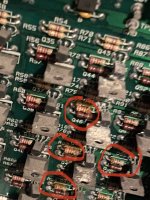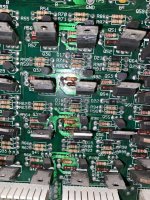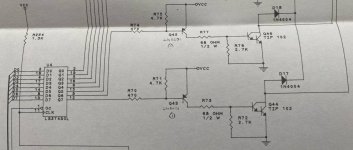Hello 
Since I got this game I noticed that a couple of my back box flashers were not working (circled in red below) ...and yes I know there are no bulbs in the sockets in the photo
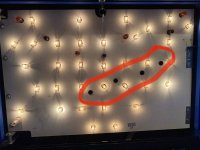
In the test menu these are the flashers in question (BACKGLASS RAFT & BACKGLASS RIDERS)
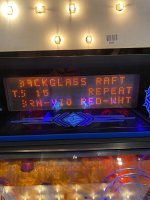
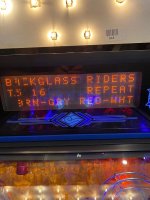
I traced the wires back and they connect to J128. It looks like J128 is solely responsible for these two particular flashers.
Here's the badger:
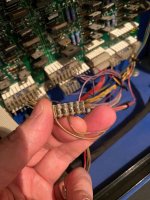
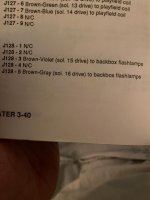
Using my DMM I checked continuity from the Molex connector to the lamp holders and they checked out fine so no breaks in the wiring. I also changed the Molex connector for good measure but no dice they are still not working.
All other flashers in the backbox and the playfield work fine and these two flashers share the same voltage connection as some of those other flashers (J106-5)
Therefore I assume it is either a cracked solder joint on J128 header pins, a broken trace or another component further upstream responsible for these two flashers.
The Solenoid/Flasher Table lists them as:
SOL No 15
Backglass Raft
Low Power
Drive Transistor Q46
SOL No 16
Backglass Riders
Low Power
Drive Transistor Q44
I've tried to include as much information as I can. I'm just looking for a technical guru to help me and chime in with any other simple tests that I might be able to perform to isolate the problem further upstream before I go pulling the board.
Thank you

Since I got this game I noticed that a couple of my back box flashers were not working (circled in red below) ...and yes I know there are no bulbs in the sockets in the photo

In the test menu these are the flashers in question (BACKGLASS RAFT & BACKGLASS RIDERS)


I traced the wires back and they connect to J128. It looks like J128 is solely responsible for these two particular flashers.
Here's the badger:


Using my DMM I checked continuity from the Molex connector to the lamp holders and they checked out fine so no breaks in the wiring. I also changed the Molex connector for good measure but no dice they are still not working.
All other flashers in the backbox and the playfield work fine and these two flashers share the same voltage connection as some of those other flashers (J106-5)
Therefore I assume it is either a cracked solder joint on J128 header pins, a broken trace or another component further upstream responsible for these two flashers.
The Solenoid/Flasher Table lists them as:
SOL No 15
Backglass Raft
Low Power
Drive Transistor Q46
SOL No 16
Backglass Riders
Low Power
Drive Transistor Q44
I've tried to include as much information as I can. I'm just looking for a technical guru to help me and chime in with any other simple tests that I might be able to perform to isolate the problem further upstream before I go pulling the board.
Thank you

